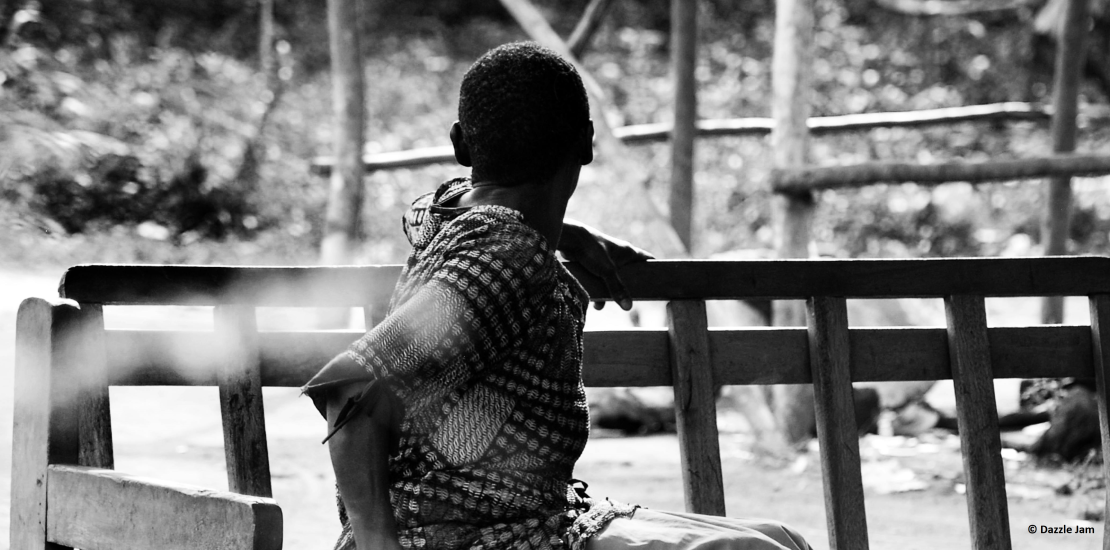Conflict in Western DRC simmers unnoticed amid rebel gains in the East
- February 16, 2024
- Posted by: Innovative Aid Strategy & Consulting
- Categories: Humanitarian, International

From The New Humanitarian, published on February 2024
View Original
KINSHASA
A courtyard in a hardscrabble neighbourhood of Kinshasa, the capital of the Democratic Republic of the Congo, is strewn with plastic chairs and clothes lines. Mats are lined up on the concrete floor for children to sleep on. A power cut means it’s almost pitch-black.
The roughly 140 residents of the courtyard are Teke people who fled Kwamouth in the province of Mai-Ndombe, some 200 kilometres north of Kinshasa, after a militia known as the Mobondo attacked their village in September 2022.
John Mushebi, 58, a Kinshasa resident whose parents hailed from their village of Ingwene, welcomed as many survivors as he could into his property in the capital.
“They’ve received no assistance. They’re abandoned to their fate,” Mushebi told The New Humanitarian recently, deploring a lack of government help. Three displaced children living in the courtyard had recently died, at least one of them from cholera.
The knot of survivors sheltering in Mushebi’s compound are among at least 160,000 people – some estimates say far more – who have fled their homes due to the conflict in Kwamouth, which was sparked in mid-2022 by a dispute over traditional tithes owed to Teke chiefs in the region.
The dispute quickly spiralled. The newly formed Mobondo militia – comprising Yaka people, as well communities judged to be related to them – sprang up and began to drive the Teke and their perceived allies from their villages. The violence spread into neighbouring western provinces, even reaching the capital province of Kinshasa.
Compared to the conflicts that plague eastern DRC, where tensions are increasing between Congo and neighbouring Rwanda over the advance of the M23 rebel group, little international attention has been paid to the unrest in Kwamouth, despite its proximity to the capital.
The focus has instead been on the eastern city of Goma, blockaded by the Rwandan-backed M23, amid fears in recent weeks that it could fall.
The Congolese military launched pacification operations last year against the Mobondo militia, but the government banned journalists from travelling to three of the provinces affected by the violence.
“The situation is under the control of loyalist forces, who are carrying out in-depth clean-up operations,” Congolese army spokesman Sylvain Ekenge told The New Humanitarian.
What little information has leaked out paints a picture of extreme violence, with villages torched and looted across the territory.
Bardo Kamona, another survivor of Ingwene, said Mobondo men – “masked and covered in soot” – attacked the village at 3am, sacking houses and killing scores of people, including the traditional chief.
“There’s no way to go home,” the 39-year-old woman told The New Humanitarian, speaking from a property not far from Mushebi’s courtyard where she had taken refuge with 20 others after a week-long journey to Kinshasa on foot.
The violence is ongoing. About 10 people were killed in an attack on a village in Kwamouth on 23 January, and another seven were reportedly killed in the next-door province of Kwango on 2 February.
It’s unclear how many people have died in the conflict so far, although a December report by a UN group of experts pointed to hundreds of civilians killed on both sides. The real death toll is considered to be much higher.
‘They’re all in need’
The humanitarian impact of the crisis has been dire. Florian Monnerie, country director for relief agency Action Against Hunger, said between 500,000 and 600,000 people had been affected by displacement – either displaced themselves, or hosting people who had fled the violence.
“We can’t really know the real numbers,” he explained. “They are all in need of immediate humanitarian aid.”
Kwamouth is considered poor even by the standards of the DRC, a country still struggling with its colonial legacy, failures of successive governments, and decades of conflict. Most of its inhabitants engage in subsistence farming to survive, but their farms are now unsafe to tend.
“These dissident groups develop their war economy, at the expense of the population.”
Only two main roads cross the territory, which are sometimes subject to militia roadblocks, or attacks, complicating humanitarian access. Most aid efforts are therefore focused on settlements near the Congo river.
The interior of Kwamouth, which includes lush forested areas, is mostly under Mobondo control, and is particularly difficult to access. Militia have attacked about half of the villages in the territory, according to an October report by the NGOs Magna and Caritas, and the Archdiocese of Kinshasa.
“These dissident groups develop their war economy, at the expense of the population,” the report said.
In September, the same organisations reported that militiamen controlled 73 of the 144 villages in Kwamouth.
For more information, please visit: thenewhumanitaire
Leave a Reply Cancel reply
Looking for help with your humanitarian or development innovative actions? Or maybe you’re interested in full training services. Whatever you need, we’re here to help you.
